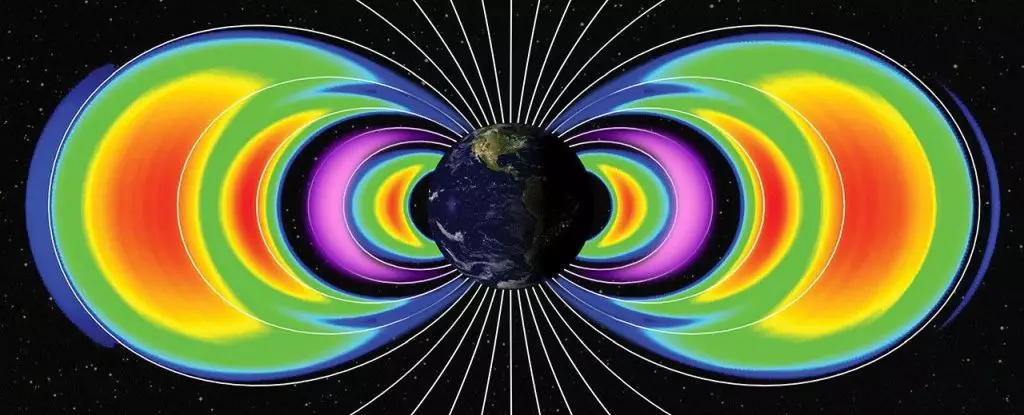In May 2024, Earth experienced an unprecedented solar storm that reverberated across the planet, from the vastness of space to the depths of the ocean. This occurrence was not merely a visible spectacle, characterized by impressive auroras lighting up the night sky at unusual latitudes; it was a scientifically significant event that provided new insights into solar activity and its interaction with our planet’s magnetic field. As a result of a series of intense solar flares, the Earth found itself at the center of a unique environmental shift, one that scientists have been studying to comprehend its influences fully.
The solar storm unleashed a barrage of solar particles that dramatically impacted Earth’s magnetic field, creating a series of temporary radiation belts unlike any we had detected before. Upon analysis, researchers discovered two distinct radiation zones—one primarily composed of electrons and a previously unrecorded belt filled with energetic protons. This finding challenges our prior understanding, as it was long assumed that proton belts of this nature did not exist within the confines of our atmosphere. “When we compared the data from before and after the storm, it was a revelation,” remarked physicist Xinlin Li from the University of Colorado Boulder. The new proton belts offered fresh avenues for research as they provided a glimpse into the dynamics of particles within Earth’s magnetosphere.
Radiation belts are an intricate aspect of planetary dynamics for celestial bodies that possess magnetic fields. These belts, characterized by a toroidal structure, collect particles emitted by the Sun, effectively acting as a protective barrier against the onslaught of solar winds. Earth is home to two principal radiation belts, known as the Van Allen belts, which are essential for maintaining conditions that permit life as we know it. However, the introduction of these temporary belts established post-storm presents more than merely a short-lived phenomenon. The ability of these new belts to persist much longer than expected—three months instead of mere weeks—demands a recalibration of our understanding of how solar storms influence our environment.
As scientists delve deeper into the study of these new radiation belts, the implications for future technological and scientific endeavors are vast. Given that particles elevated to high energies can pose serious risks to satellites and space-bound technologies, understanding the longevity and decay rates of these particles becomes vital. Although the initial effects of subsequent solar storms in June and August 2024 diminished the density of these radiation zones, a small remnant continues to exist. Notably, the proton belt may endure for over a year, raising questions about its potential for damaging Earth-based technologies that rely on satellites for communication, navigation, and data transfer.
While initial observations have provided a wealth of data, the quest for knowledge surrounding these newfound radiation belts continues. Future studies will aim to measure their interactions with both solar and terrestrial phenomena more accurately. As researchers gather more extensive datasets, they will seek to determine the extent to which these temporary belts may threaten satellite operations and how future storms might alter the current state of Earth’s magnetosphere. Additionally, the collaboration among astrophysicists, aerospace engineers, and environmental scientists will be paramount in developing mitigation strategies to safeguard our technological infrastructure from the evolving dynamics of space weather.
The May 2024 solar storm stands as a testament to the immense force of cosmic activity and its far-reaching impact on our planet. It serves as a reminder of the delicate balance of conditions that permit life on Earth and the potential threats posed by solar activity. By further investigating these recent findings and understanding their implications, scientists continue to bridge the gap between solar phenomena and Earth’s atmospheric response, enhancing our knowledge of the universe while ensuring the safety and durability of our technological advancements. The journey of understanding the solar-terrestrial relationship is ongoing, and each new discovery sheds light on this cosmic dance we are only beginning to grasp.


Leave a Reply